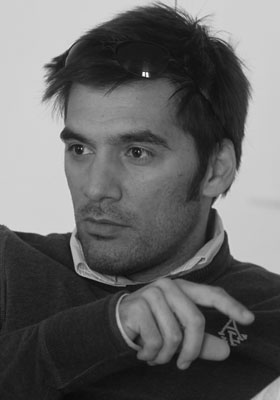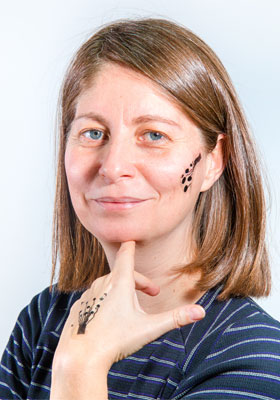Looking for one thing: finding another
Did you know that the Persian fairy tale “The Three Princes of Serendip” provided the inspiration for the first noted use of the word “serendipity” in the English language? In this story, the heroes are always making happy and surprising discoveries. In science, this concept of a pleasant surprise covers the mismatch between what the researchers expected to find and what they actually discovered, as introduced in this newsletter’s editorial. It has given us innovations such as the microwave, Teflon, X-rays, penicillin, the World Wide Web and much more. What started off with a fairy tale, ended up as a byword for an influential idea in research policy-making and even headlining a recent ERC-funded project.

In the past decades, serendipity has played an important role in debates about the feasibility and desirability of targeting R&D investments. The founders of the ERC thought an EU body that would fund curiositydriven scientific projects and give researchers complete freedom to explore, would also help bring about new and unpredictable scientific and technological discoveries, which ultimately could also trigger innovation and economic growth.
Overall, the idea that research can lead to valuable but unexpected outcomes has been around for a while. But how often do serendipitous discoveries actually happen? What is the nature and significance of such discoveries? Is serendipity pure luck or is a fair bit of wisdom also involved? Or is it merely the ability to be open to – and make the most out of - luck? Can we facilitate and manage serendipity? How often does targeted research actually hit the target? What does it all mean for R&D policy-making?
 “Researchers and policy-makers have been asking these questions for decades but, other than some famous examples, we don’t really have strong evidence to draw on to support policy-making” says Dr Ohid Yaqub from the University of Sussex. The project he is leading - Serendipity in Research and Innovation - was awarded an ERC Starting Grant this summer.
“Researchers and policy-makers have been asking these questions for decades but, other than some famous examples, we don’t really have strong evidence to draw on to support policy-making” says Dr Ohid Yaqub from the University of Sussex. The project he is leading - Serendipity in Research and Innovation - was awarded an ERC Starting Grant this summer.
Dr Yaqub says we can observe and measure things previous scholars could not. “The methods, tools and techniques for data analysis and theoretical understanding of research policy have improved. So, now we have a new framework to analyse the data, and we have access to large databases on grants, publications and patents.” He and his team will look at a sample of grants, publications that come out of these grants and patents that cite these publications. Preliminary findings show that the happy discrepancies between researchers’ proposals and their reported findings occur quite often.
It is becoming a key political question how we fund research in the best, most efficient way to maximise impact. There are choices to be made about the emphasis and balance between different modes of research funding. “It’s good that there are some funders under which serendipitous events would have been overlooked or inhibited, because sometimes it’s important not to lose focus on an end goal”, Dr Yaqub says. “But it’s also good that there are funders like the ERC that do allow uncertainty and unexpected discoveries to happen and indeed encourage more open thinking. Clearly, it’s vitally important to have diversity when it comes to research funders that allow researchers to be able to contribute to society in different and flexible ways.” said Dr Yaqub.Whilst he will be looking into some of the questions surrounding serendipity, a few ERC grantees have already experienced such happy mismatches for themselves.
 Take for example Achilleas Frangakis from Goethe University Frankfurt. In his Starting Grant project, he used cryo-electron tomography, a state-of-the-art imagining technique, to visualise the architecture of cell adhesion. Though essential, this process in which proteins present on the cell’s surface anchor to extracellular proteins allowing the cell to sense the external environment and respond to it, was poorly understood.
Take for example Achilleas Frangakis from Goethe University Frankfurt. In his Starting Grant project, he used cryo-electron tomography, a state-of-the-art imagining technique, to visualise the architecture of cell adhesion. Though essential, this process in which proteins present on the cell’s surface anchor to extracellular proteins allowing the cell to sense the external environment and respond to it, was poorly understood.
Prof. Frangakis was trying to describe how cells interact with the outside world, but instead he learnt a lot about how they interact with each other. In particular, during the process of wound healing, neighbouring cells lock together to seal a wound, a bit like a zipper would. “It turned out that we had rediscovered a mechanism already known to happen during mitosis, another cellular process, but as a completely new concept for tissue sealing and healing” stated the scientist, who has opened new paths into the study of wound reparation.
 Prof. Yael Hanein from Tel Aviv University also had a bit of a “eureka” moment. Her work was investigating nanotechnology tools in the field of neuron stimulation for sight restoration. Using sophisticated and accurate carbon nanotubes, her Starting Grant project created a high-acuity artificial retina.
Prof. Yael Hanein from Tel Aviv University also had a bit of a “eureka” moment. Her work was investigating nanotechnology tools in the field of neuron stimulation for sight restoration. Using sophisticated and accurate carbon nanotubes, her Starting Grant project created a high-acuity artificial retina.
Through a spin-off of her project, she has developed an extremely thin electrode that can be worn as a tattoo and record muscle movement. The electrode, originally made as a research tool, has a variety of potential medical applications, from mapping facial expressions and recording emotions, to restoring damaged nerves and muscles, and studying neurodegenerative diseases.
Further work is going into understanding whether the tool could provide a diagnostic tool for Parkinson’s disease, an instrument to optimise artificial limbs or even a test for certain psychological disorders.
This article was first published in ERC newsletter, autumn 2017 issue. Read also Dr Jose Labastida’s editorial. "The ERC is creating fertile ground for serendipity to occur", he writes

